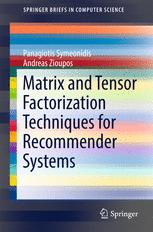

Most ebook files are in PDF format, so you can easily read them using various software such as Foxit Reader or directly on the Google Chrome browser.
Some ebook files are released by publishers in other formats such as .awz, .mobi, .epub, .fb2, etc. You may need to install specific software to read these formats on mobile/PC, such as Calibre.
Please read the tutorial at this link: https://ebookbell.com/faq
We offer FREE conversion to the popular formats you request; however, this may take some time. Therefore, right after payment, please email us, and we will try to provide the service as quickly as possible.
For some exceptional file formats or broken links (if any), please refrain from opening any disputes. Instead, email us first, and we will try to assist within a maximum of 6 hours.
EbookBell Team

4.4
32 reviewsThis book presents the algorithms used to provide recommendations by exploiting matrix factorization and tensor decomposition techniques. It highlights well-known decomposition methods for recommender systems, such as Singular Value Decomposition (SVD), UV-decomposition, Non-negative Matrix Factorization (NMF), etc. and describes in detail the pros and cons of each method for matrices and tensors. This book provides a detailed theoretical mathematical background of matrix/tensor factorization techniques and a step-by-step analysis of each method on the basis of an integrated toy example that runs throughout all its chapters and helps the reader to understand the key differences among methods. It also contains two chapters, where different matrix and tensor methods are compared experimentally on real data sets, such as Epinions, GeoSocialRec, Last.fm, BibSonomy, etc. and provides further insights into the advantages and disadvantages of each method.
The book offers a rich blend of theory and practice, making it suitable for students, researchers and practitioners interested in both recommenders and factorization methods. Lecturers can also use it for classes on data mining, recommender systems and dimensionality reduction methods.